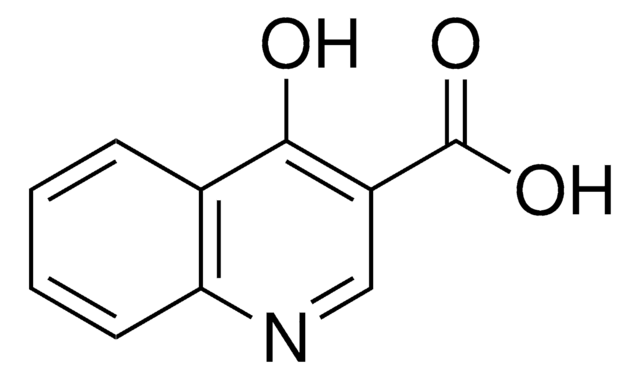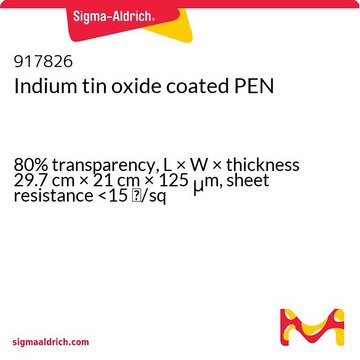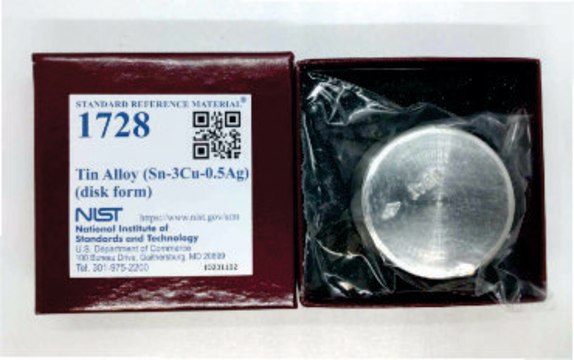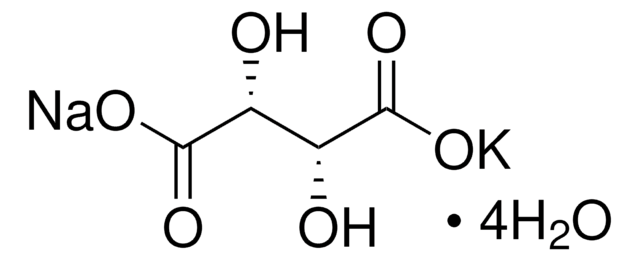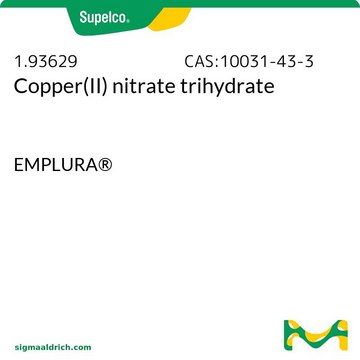V000349
Iron(III) sulfate hydrate
Synonym(s):
Ferric sulfate hydrate
Sign Into View Organizational & Contract Pricing
All Photos(1)
About This Item
Linear Formula:
Fe2(SO4)3 · xH2O
CAS Number:
Molecular Weight:
399.88 (anhydrous basis)
EC Number:
MDL number:
UNSPSC Code:
12352300
PubChem Substance ID:
Recommended Products
SMILES string
[Fe+3].[Fe+3].[O-]S([O-])(=O)=O.[O-]S([O-])(=O)=O.[O-]S([O-])(=O)=O
InChI
1S/2Fe.3H2O4S/c;;3*1-5(2,3)4/h;;3*(H2,1,2,3,4)/q2*+3;;;/p-6
InChI key
RUTXIHLAWFEWGM-UHFFFAOYSA-H
Looking for similar products? Visit Product Comparison Guide
Application
Iron(III) sulfate hydrate can be used as a catalyst in the preparation of:
Iron(III) sulfate hydrate can also be used in the synthesis of a water oxidation catalyst named μ-O-μ-(SO4)-[(TPA)Fe]2(HSO4)2·MeOH.
- 1,8-Dioxo-octahydroxanthenes.
- Aryl methyl ketones by aromatic alkyne hydration.
Iron(III) sulfate hydrate can also be used in the synthesis of a water oxidation catalyst named μ-O-μ-(SO4)-[(TPA)Fe]2(HSO4)2·MeOH.
Signal Word
Danger
Hazard Statements
Precautionary Statements
Hazard Classifications
Acute Tox. 4 Oral - Eye Dam. 1 - Skin Irrit. 2
Storage Class Code
13 - Non Combustible Solids
WGK
WGK 1
Flash Point(F)
Not applicable
Flash Point(C)
Not applicable
Regulatory Information
新产品
Choose from one of the most recent versions:
Already Own This Product?
Find documentation for the products that you have recently purchased in the Document Library.
"Hydration of aromatic terminal alkynes catalyzed by iron (III) sulfate hydrate under chlorine-free conditions"
Bassetti M, et al.
Tetrahedron Letters, 55(9), 1608-1612 (2014)
An efficient solvent-free synthesis of 1, 8-dioxo-octahydroxanthenes by using Fe2 (SO4) 3.7 H2O as catalyst
Khoeiniha R, et al.
Quarterly Journal of Iranian Chemical Communication , 4, 273-282 (2016)
M I Murav'ev et al.
Prikladnaia biokhimiia i mikrobiologiia, 47(6), 663-671 (2012-02-01)
Leaching of sulfide-oxidized copper concentrate of the Udokan deposit ore with a copper content of 37.4% was studied. In the course of treatment in a sulfuric acid solution with pH 1.2, a copper leaching rate was 6.9 g/kg h for
H Y Zhang et al.
Water science and technology : a journal of the International Association on Water Pollution Research, 64(7), 1413-1418 (2011-12-20)
This work aims to investigate removal efficiency of oxidation and coagulation/flocculation processes, to provide an effective method for the treatment of biologically pre-treated leachate. Leachate containing 985 mg L(-1) COD was treated by using three treatment schemes, i.e. oxidation, coagulation/flocculation
M E Odabaş et al.
European journal of paediatric dentistry : official journal of European Academy of Paediatric Dentistry, 13(2), 118-122 (2012-07-06)
The purpose of this study was to evaluate and compare the clinical and radiographic findings of ferric sulphate (FS) and mineral trioxide aggregate (MTA) as vital pulpotomy materials in primary molars. Participants, including 40 boys and 53 girls ranging between
Our team of scientists has experience in all areas of research including Life Science, Material Science, Chemical Synthesis, Chromatography, Analytical and many others.
Contact Technical Service
